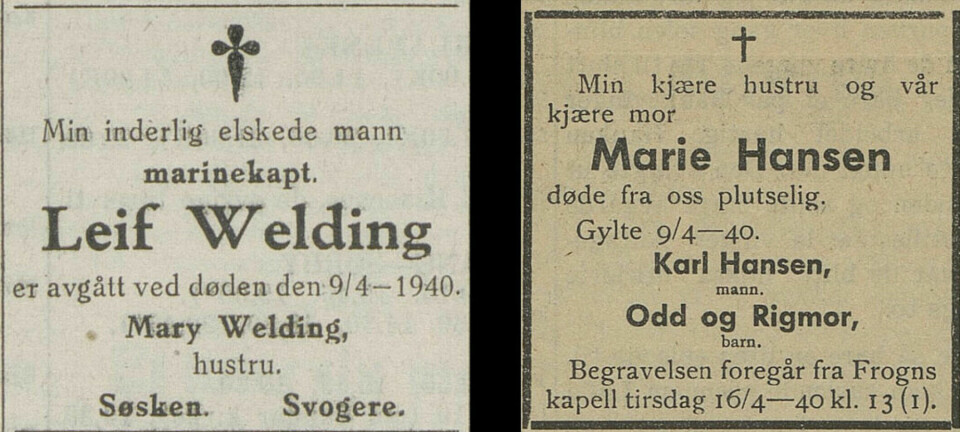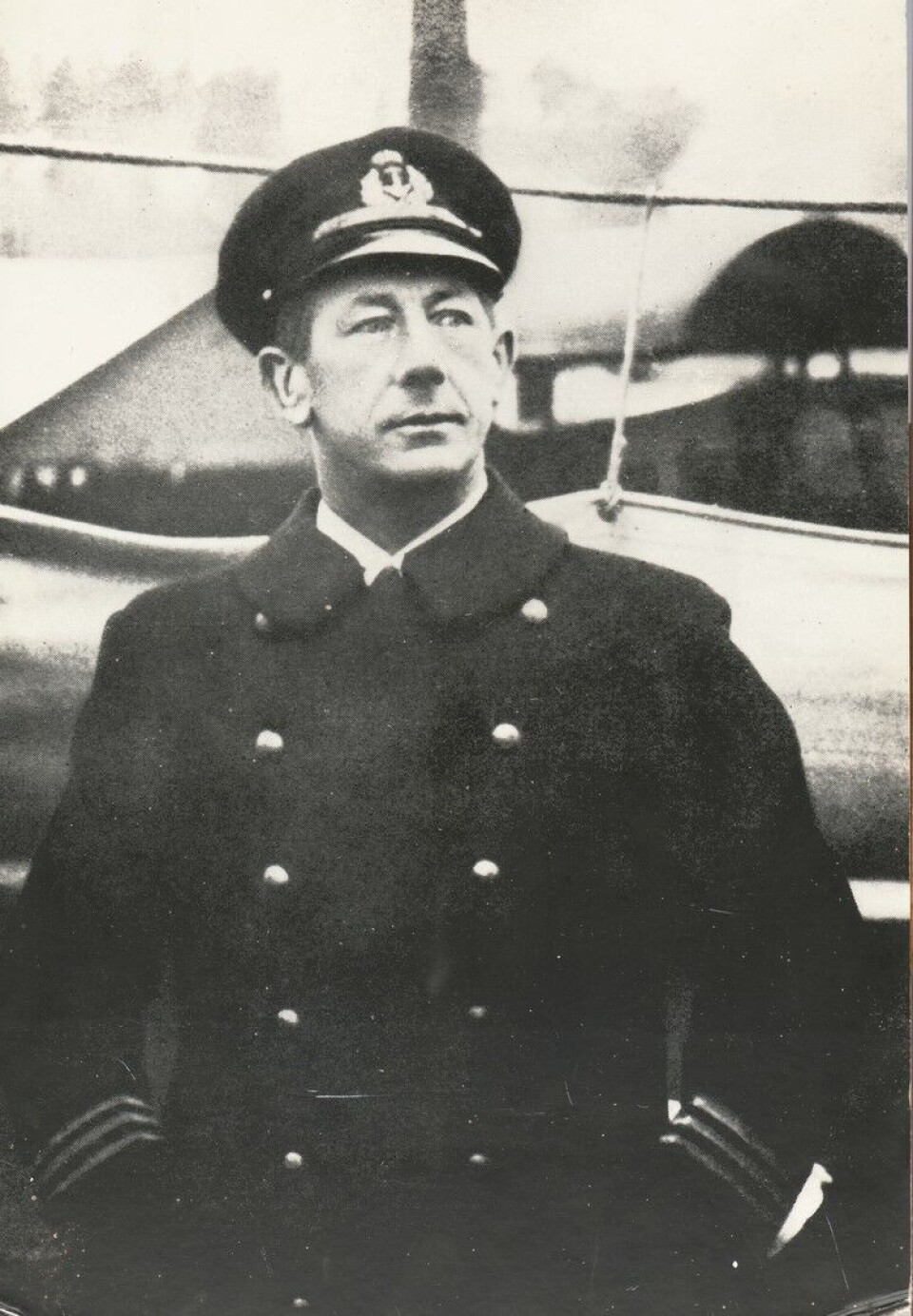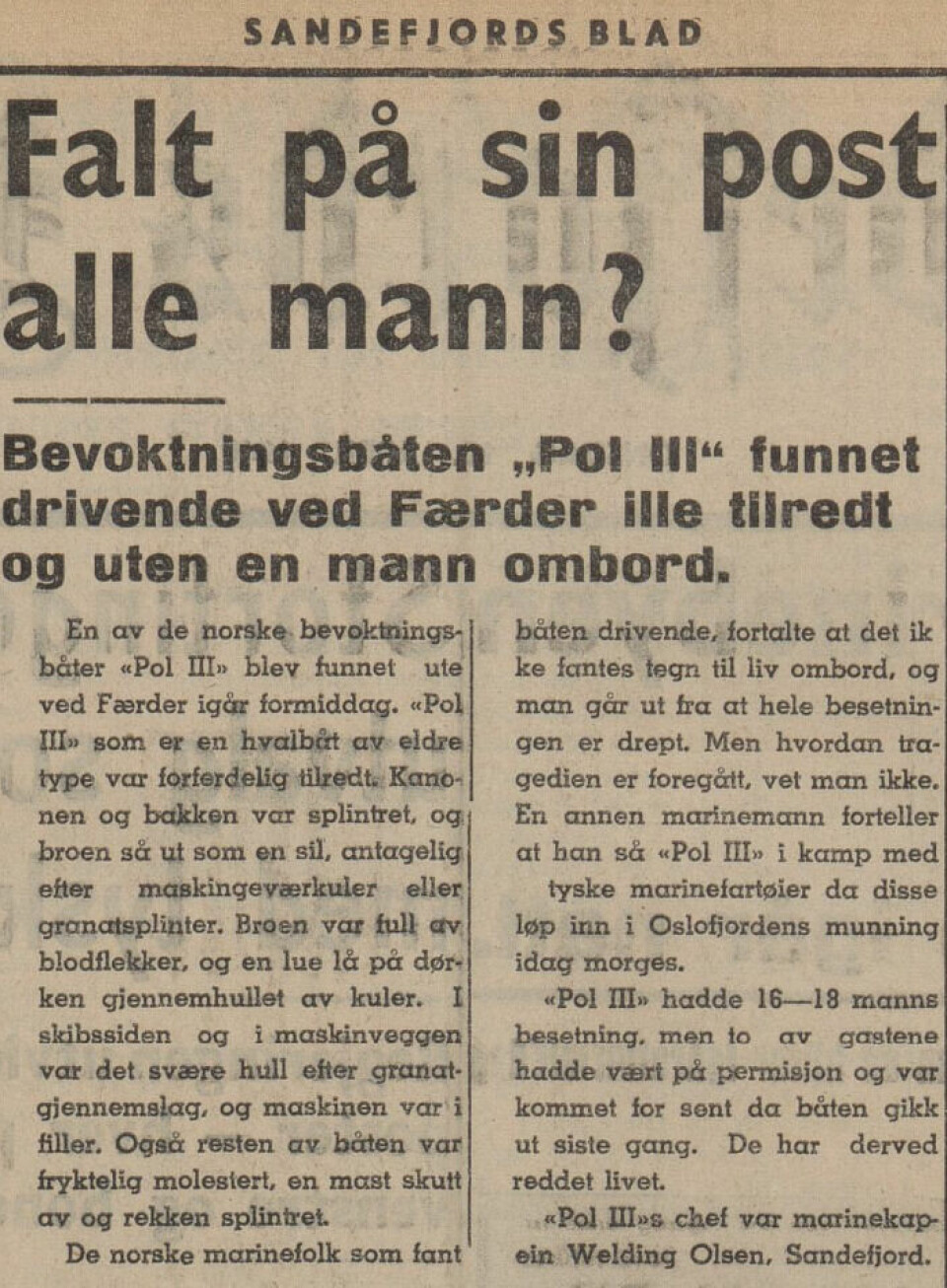
Leif and Anette Marie were the first to lose their lives in the World War II in Norway
His story is well documented. Her story is forgotten.
58 enemy ships sailed from ports in Germany. On board were 9,000 soldiers.
The plan was bold. The ships were to capture the ports in seven Norwegian cities at night without being detected. Then the soldiers were to take over the cities before the military, politicians, and population had a chance to react.
It went quite well for the Germans. The ships sailed into Norwegian ports exactly according to plan, even though they encountered resistance in Stavanger.
Also, up the Oslofjord, things initially went smoothly. On the evening of April 8th, a group of warships sailed past Norwegian guards and defense structures. The darkness protected them.
But then they were discovered.
Old whaler on guard
Norway had declared that they were neutral in the world war. The defense was weak and limited to guard duty.
“The Norwegian defense in the years before 1940 was more of a guard force, meant to alert and signal if the warring countries violated Norwegian territorial integrity,” says Gunnar D. Hatlehol, a researcher at the Narvik War and Peace Centre.
And it was the navy's task to keep watch. They lacked boats. In Larvik, an old whaler was hired, which was equipped with a small cannon and two machine guns.
Naval officer Leif Welding Olsen was given command of Pol III and 17 men. They were to patrol the Outer OslofjordS.

At about 11pm on April 8th, Pol III is by Færder and is to proceed to Hvaler.
Then they see the silhouette of several large ships sailing without lights and flags. They can also see the cannons on deck.
Headed straight for them
Captain Welding Olsen sends up flares. That is the signal that an enemy force is on its way. Then he gives the command to go full speed ahead.
The 34-metre-long whaler heads straight for the first warship, which is six times its size. Now they hear German voices.
Welding Olsen shouts to the Germans to surrender, otherwise Pol III will fire.
The answer is a hail of bullets.
Many rumors circulate in the days afterward. What really happened to Pol III?
Fallen or captured?
German censorship of the newspapers had not yet kicked in, but much was happening all over the country, and it was difficult to get the facts out.
‘Did all hands fall at their post?’ was the headline in Sandefjords Blad on April 10th.
For Pol III was found drifting by Færder lighthouse. The deck was full of bullet holes, the cannon was shot to pieces, and there were bloodstains everywhere. There was no one on board. The Norwegian marines who found the whaler believed that everyone had been killed.
That was not the case.
Gradually, the story emerges.
Shot in the legs

The Germans fire machine guns and cannons at the whaler. The bullets come quickly, but it’s dark, and none of the Norwegians are hit.
They are ordered to surrender. Captain Welding Olsen refuses.
At the same time, he realises that the enemy force is too great. The boat is shot to pieces.
They board a barge and lower it into the water.
Then Welding Olsen is hit in the legs with several bullets. He bleeds profusely.
The barge sinks
The barge is too full and sinks. The Norwegians end up in the icy water.
They decide to get back on the whaler.
Welding Olsen holds on to the side of the boa. Half an hour passes. By then, everyone has made it back onto the boat, but the captain is gone.
He has disappeared into the depths. Welden Olsen was 44 years old. He is the first military casualty in the occupation of Norway.
The Germans take the Norwegian seamen aboard. They have now become prisoners of war.
Continue towards Oslo
A few days later, a crew member of Pol III tells the newspaper Vestfold that they were well taken care of on board the German ship Emden.
The warships continue sailing up the Oslofjord.
The Germans are confident and do not send one of the smaller ships ahead to scout the waters.
It is the largest of them, Blücher, that leads the way. On board are the command staff who will lead the occupation of Oslo, soldiers, and crew. In total, 1,500 men.
But the warnings from Pol III were picked up by the defense installations further into the Oslofjord. At Oscarsborg Fortress, they prepare. They have three large and old cannons, which are loaded.
Then the battle begins.
Blücher is sunk
At 4:20 in the morning on April 9th, Blücher reaches Oscarsborg. Here, the Oslofjord is at its narrowest.
Commander Birger Eriksen gives the order. Shots from the large cannons hit Blücher. Smaller cannons also make hits.
Blücher is burning, but sails on. Then two torpedoes strike the side of the ship. The engines stop, and water floods in. There are fires and explosions everywhere on the ship.
Most viewed
The men on board fight against the fires and for their lives. After two hours, it is clear that Blücher will sink, and they are ordered to abandon ship.
Close to 1,000 men die in the flames or drown.
Made it into the history books
The other German ships turn and head south again. They fear meeting the same fate.
The drama continues for the crew of Pol III, the anonymous seaman tells the newspaper Vestfold. For Emden is also fired upon from Norwegian fortresses and is hit several times. But they manage to survive.
Leif Welding Olsen's fate has been recounted in books, articles, and history books. The sinking of Blücher has as well, which will soon be depicted in two new feature films.
Anette Marie Hansen's story is not as well known.
Killed in the kitchen
But her story has been told by historian Ingar Sletten Kolloen in his book: Vi må ikke falle (We must not fall).
Anette Marie Hansen lives in Drøbak. She is awakened by the sounds from Oscarsborg and gets up to find out what is happening. From her kitchen window, she has a view of the fjord.
She looks out.
Her children, aged 12 and 15, are also awakened. From the bedroom, they hear the sound of glass shattering. They run into the kitchen.
There, their mother lies on the floor among shattered glass and pieces of metal. Her body is split in two. Anette Marie Hansen was 55 years old.
She is the first civilian casualty in the occupation of Norway.
Women's stories
The children run to the neighbouring house, where their uncle lives. Together with others from the area, they manage to escape in boats.
Anette is listed on the memorial stone at the town hall in Drøbak, along with others who died in the war. But she is seldom mentioned in the many stories about the battle at Oscarsborg.
“Anette Hansen was one of the war's first civilian victims, but she has been forgotten,” says Gunnar D. Hatlehol. “The stories of women have been given far too little space in the books about World War II in Norway.”
———
Translated by Alette Bjordal Gjellesvik
Read the Norwegian version of this article on forskning.no






































